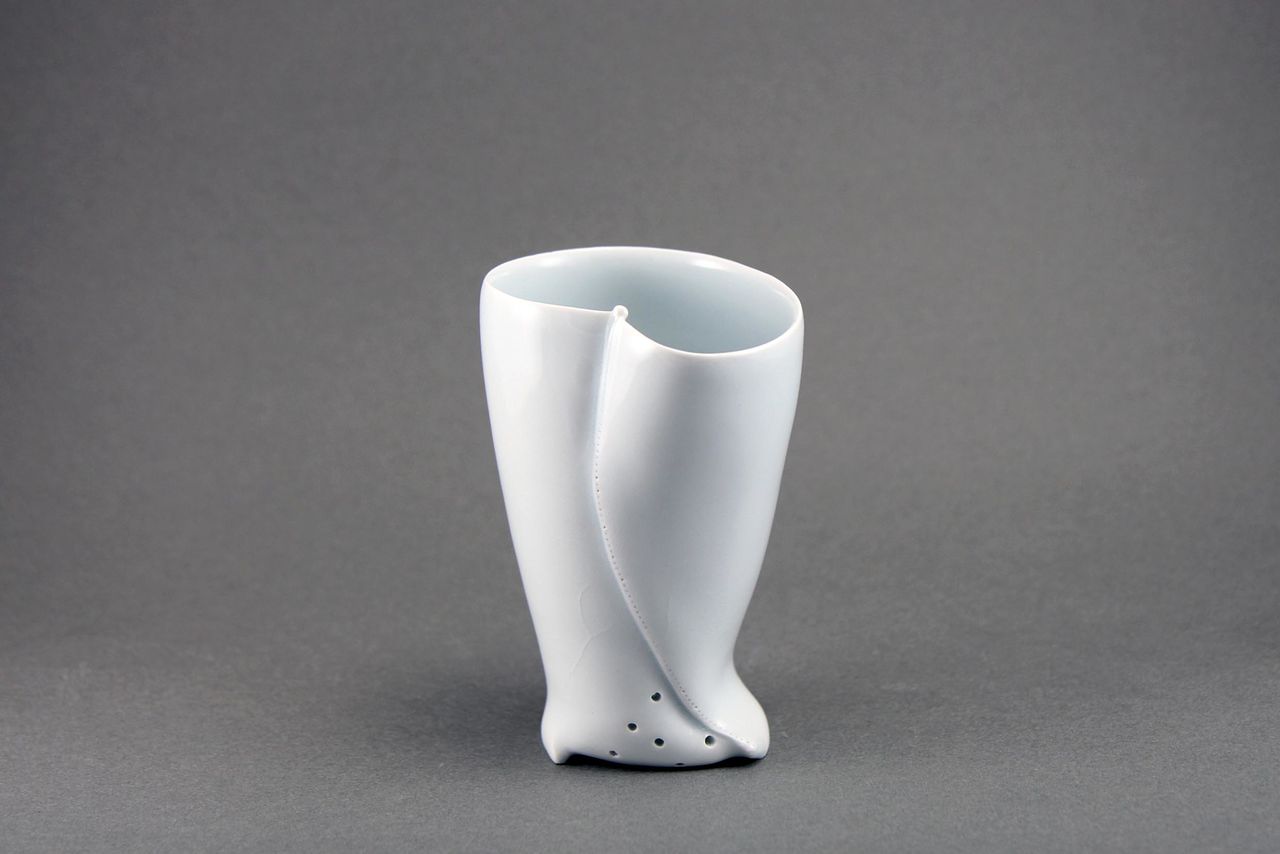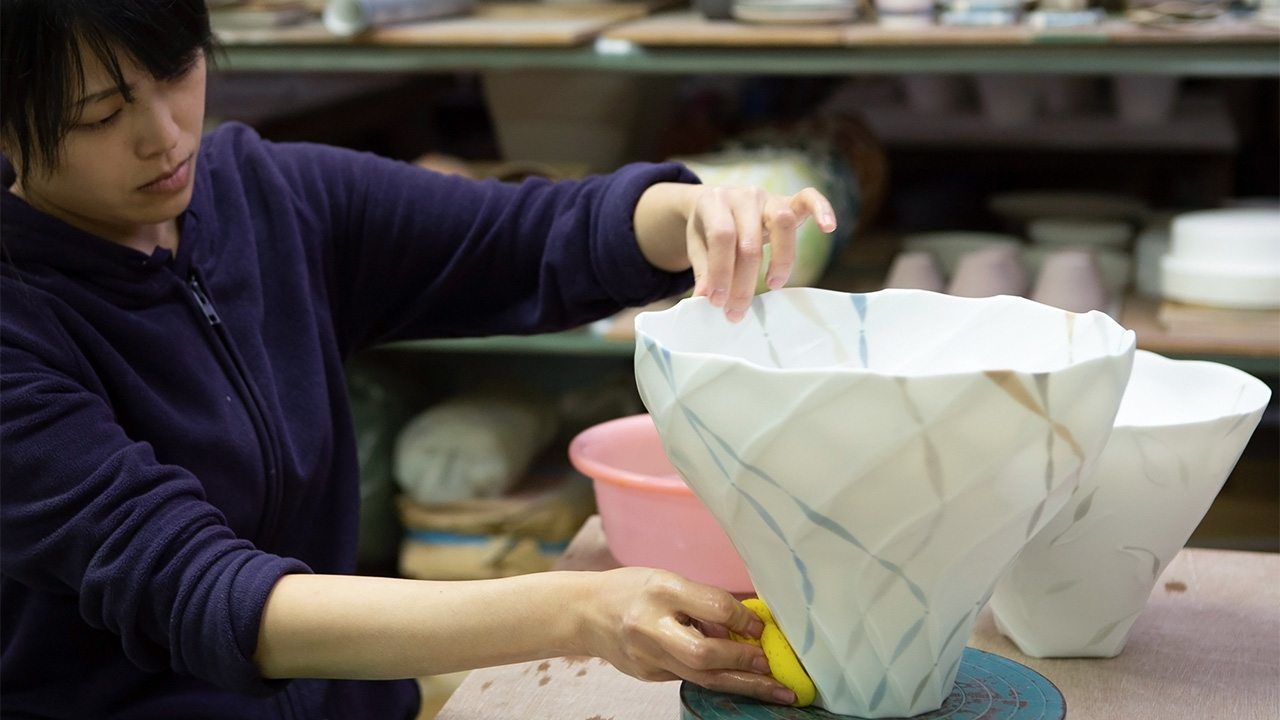
Speaking Through Ceramics: Japan-Based Taiwanese Artist Chung Wen-ting
Culture Art- English
- 日本語
- 简体字
- 繁體字
- Français
- Español
- العربية
- Русский
Lined with shelves of partially finished works, Chung Wen-ting’s studio pulsates with artistic energy. The Taiwanese artist carefully runs a water-soaked sponge across the surface of a white porcelain piece to reveal a delicate, gleaming floral pattern. A jumbled pile of sketches, concepts for other artworks, lie on the table next to her.
Chung has made a name for herself in artistic circles in Taiwan as well as Japan, where she has been based for more than a decade. Her notable honors include the grand prize in the 2013 Taiwan Young Pottery Artist Award and Biennale program, inclusion at the international crafts fair Talente 2014 in Munich, Germany, and the Mayor’s Encouragement Prize at the seventieth Kanazawa Craft Exhibition, also in 2014.
Layers of Expression
Chung’s early works were typified by flowing lines, which she produced by molding and cutting porcelain clay into curved pieces, then joining these together. The technique was inspired by the process of draping used in fashion design, where a three-dimensional model of a piece is created by cutting and sewing fabric draped across a dress form.
While studying in the United States in 2009, though, she became fascinated with a new technique, shellac resist, when she saw it demonstrated at a ceramics workshop she attended. The method allows for the creation of three-dimensional aspects and involves applying a protective coating of shellac to specific areas and using a damp sponge to wash away the surrounding layers of clay so the design stands out in relief.
After making Japan her base, she started applying the method to the bone porcelain she used. The clay was denser than standard varieties, and she found that flowers and other designs carved into the surface of works had sharp edges, an issue she was able to resolve through the use of shellac resist.
Her recent works are largely characterized by raised designs created with the method, which she has refined to create both individual pieces and larger installations.
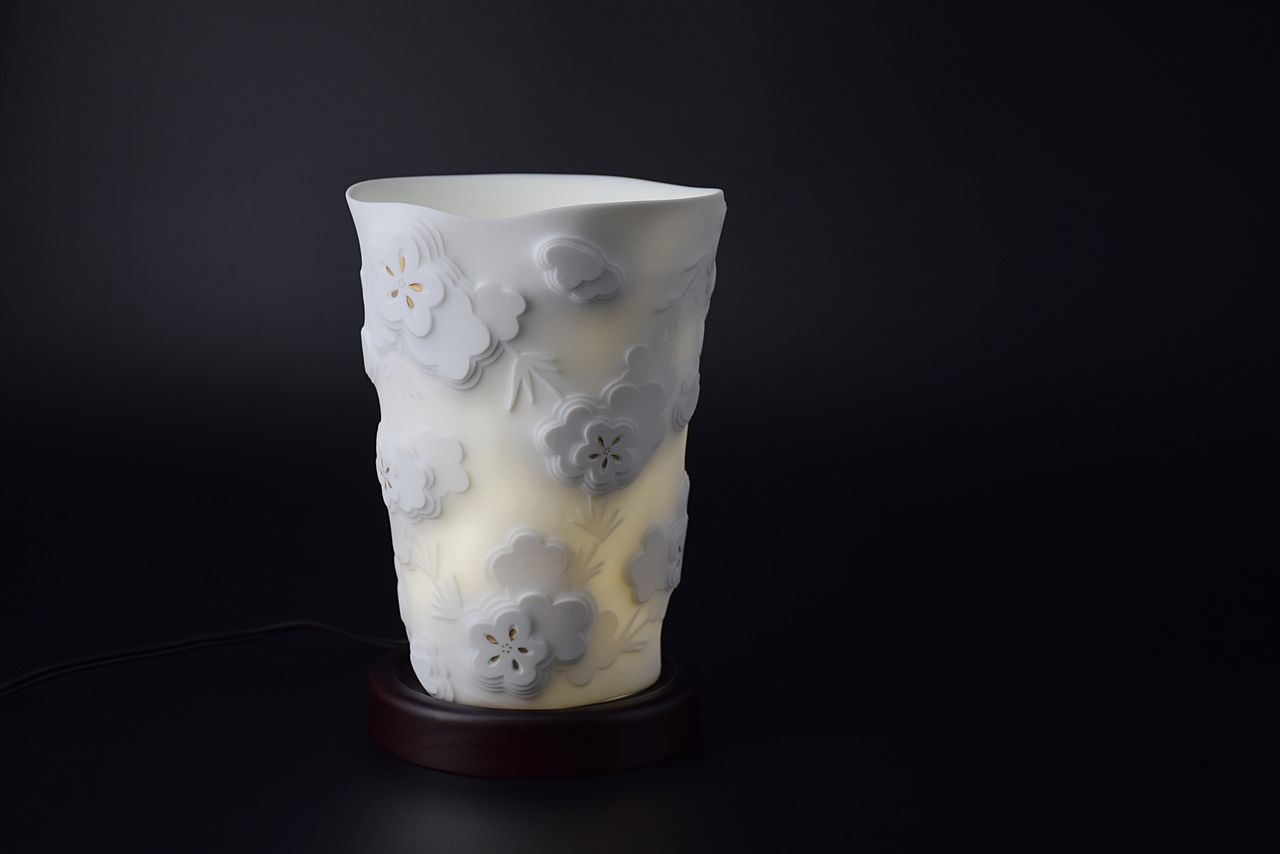
A porcelain lamp shade with raised flower and bamboo design.
Life and Art
Another defining aspect of Chung’s style is her disregard for the mainstream emphasis of creating so-called artistic works, instead focusing on pieces that balance functionality and aesthetic appeal. “In my works, I always consider the practical purpose that an object serves along with its beauty,” she explains. She first took this stance while in university, and over time she has become more deeply convinced of its importance, calling it “the essence of ceramics.”
After earning her master’s degree from Tainan National University of the Arts, she went on to study at the Kanazawa Utatsuyama Crafts Studio in Ishikawa Prefecture, where she learned about the Japanese perspective of utensils for practical use—what she describes as the “dialogue between vessel and person.”
She notes that when designing a traditional teacup, for instance, a Japanese potter will typically consider which side will be facing inward or outward when held in the hand, along with such basic aspects as the piece’s weight, width of its mouth, and overall beauty. By contrasts, Taiwanese potters and consumers tend to focus only on beauty and practicality, and rarely reflect on the “dialogue” between a ceramic piece and user.
“Once, a Japanese person looking at a cup I made asked me which side was the front,” Chung recalls. “I didn’t know how to respond, as such a consideration had never crossed my mind.”
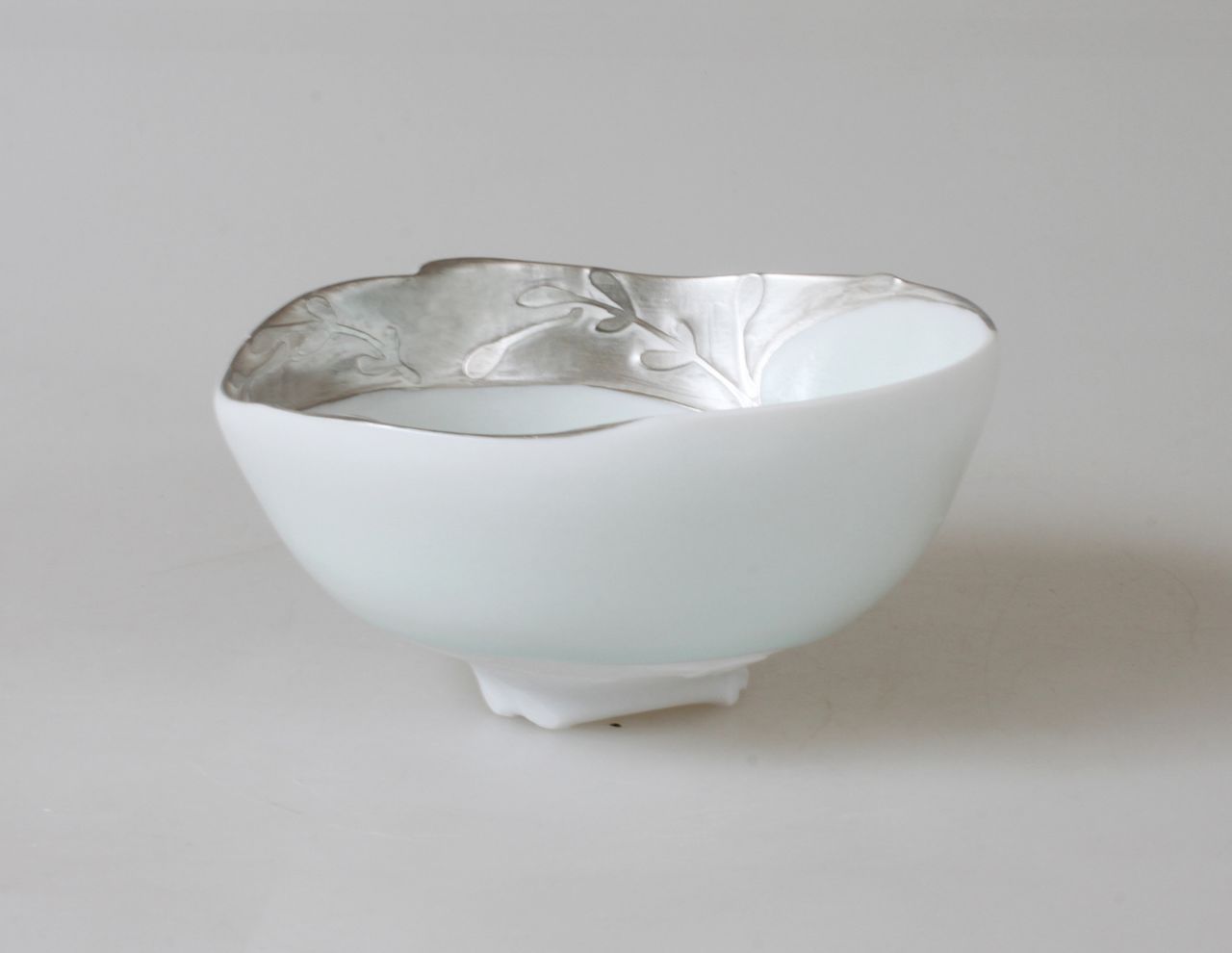
A tea bowl with silver leaf from Chung’s time studying at Kanazawa Utatsuyama Crafts Studio.
Taiwanese Blossoms
In addition to her focus on the functionality of pieces, Chung has a developed a strong interest in installation art. Her pieces to date have drawn on her native culture for inspiration, particularly vibrant flower-print textiles called Taiwan hananuno. These colorful fabrics, which are influenced by traditions from Taiwan and mainland China as well as Japanese kimono design, have been popular in Taiwan since they began being mass-produced in the 1960s.
However, Chung says she takes care to choose hananuno motifs that realistically reflect where she is from. “There’s something of an emotional disconnect to the prints in Taiwan,” she explains. “Take the moutan variety of peony. Although it is a common design used to symbolize prosperity, the flower itself is quite rare on the island.” Along with choosing hananuno designs more representative of Taiwan, she has found inspiration in her Japanese acquaintances’ enthusiasm for Taiwanese-grown fruits like wax apples, lychees, and mangoes.
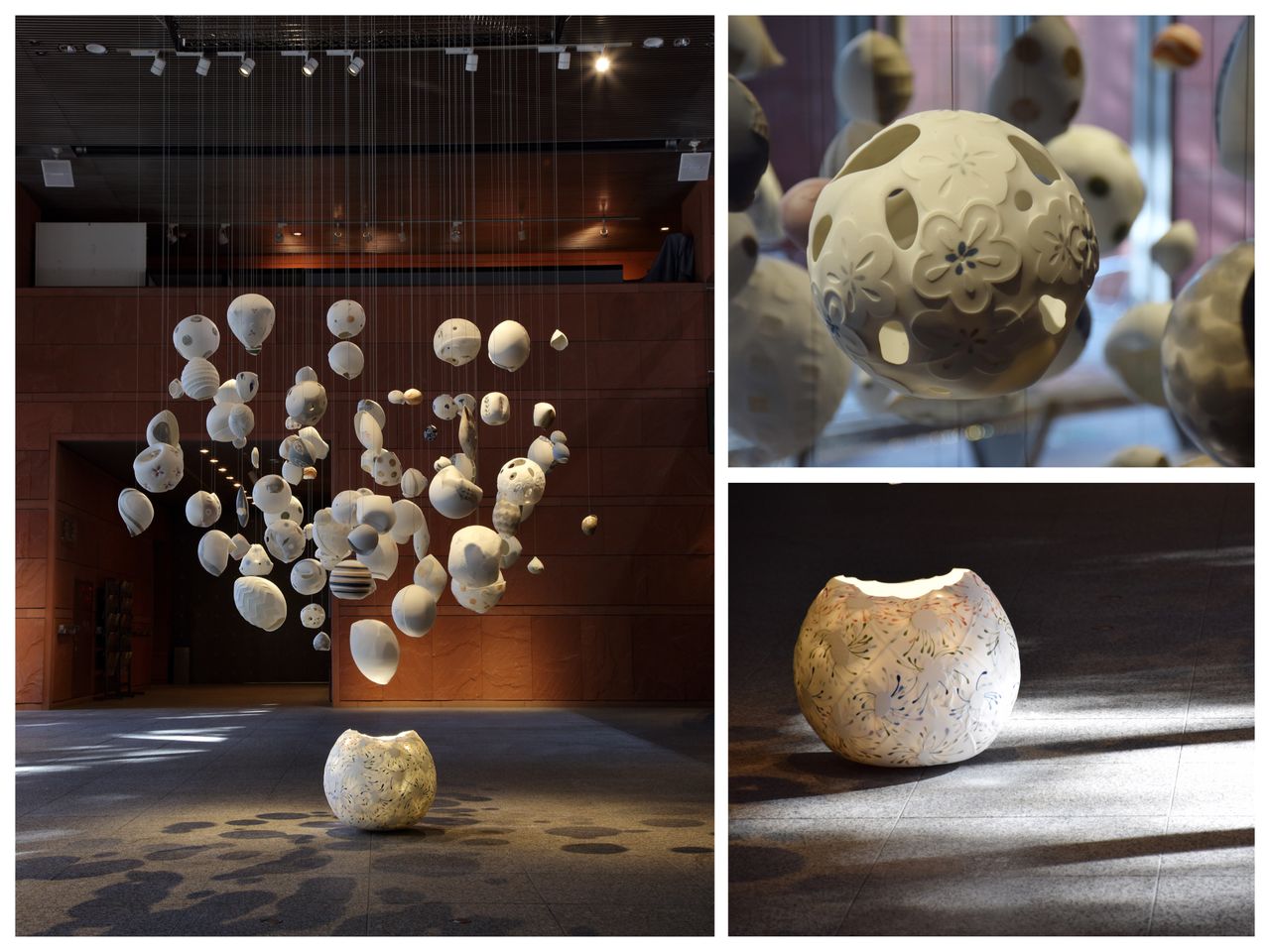
Chung exhibited an installation at the Tokyo University of the Arts University Art Museum.
Using these ideas, she created an installation based around a large, open-mouthed vessel with raised designs of Taiwanese fruit on the surface and a multitude of smaller, fruit-like porcelain pieces hanging above. The work included traditional designs from China and Japan, creating a triple cultural motif.
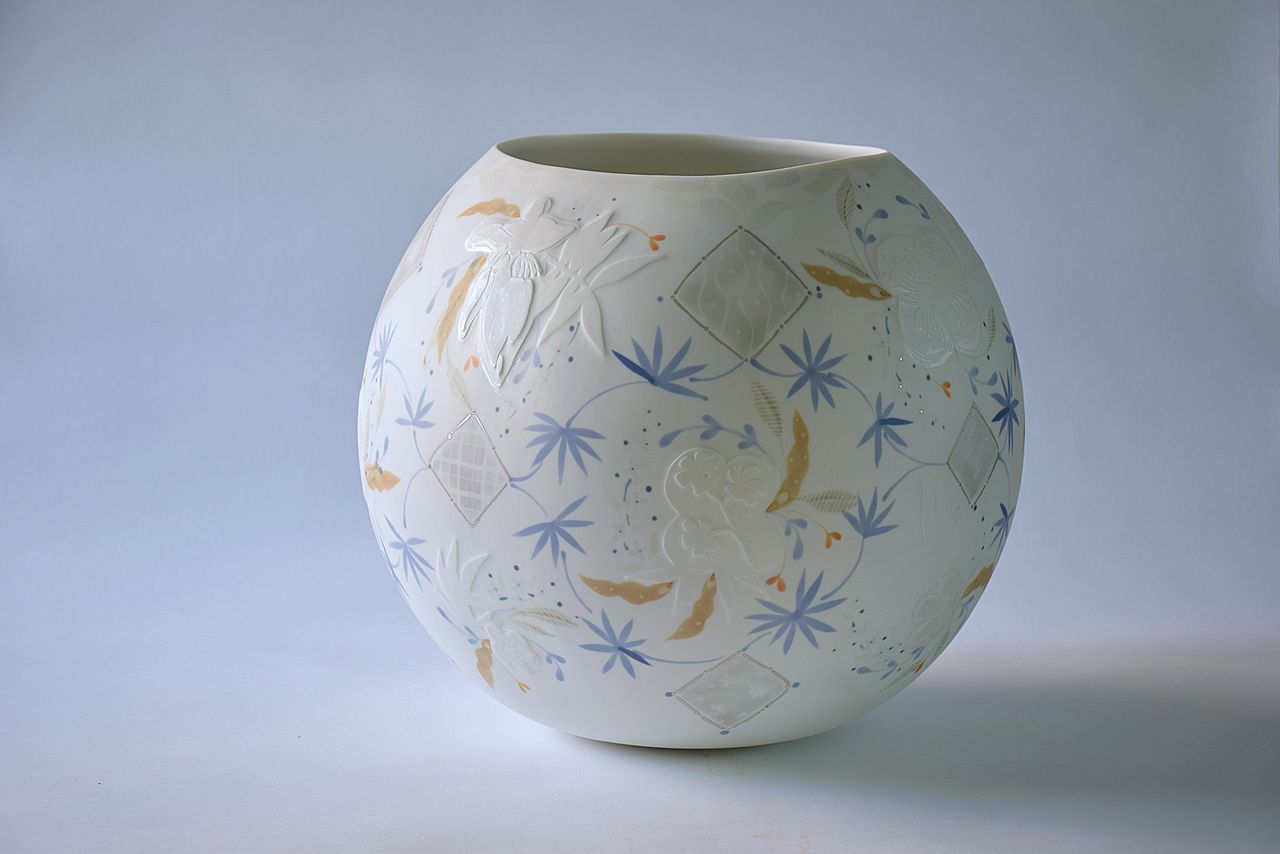
A porcelain jar with floral design.
Exploring Japanese Spaces
Chung has remained active with exhibits in Japan and elsewhere, establishing her distinct style with works employing differing techniques. Her recent output has been characterized by light green coloring with shades of light blue and gray.
In 2022, she was invited to hold an exhibit at Ninnaji in Kyoto as part of the historic temple’s imperial art festival, becoming the first Japan-based Taiwanese ceramic artist to receive such an honor. The exhibit occupied three rooms, the first of which featured a jar interwoven with abstract lines, made using the shellac resist method. The work also boasted a rainbow motif, which Chung says was to express her support of the LGBT movement in Taiwan.
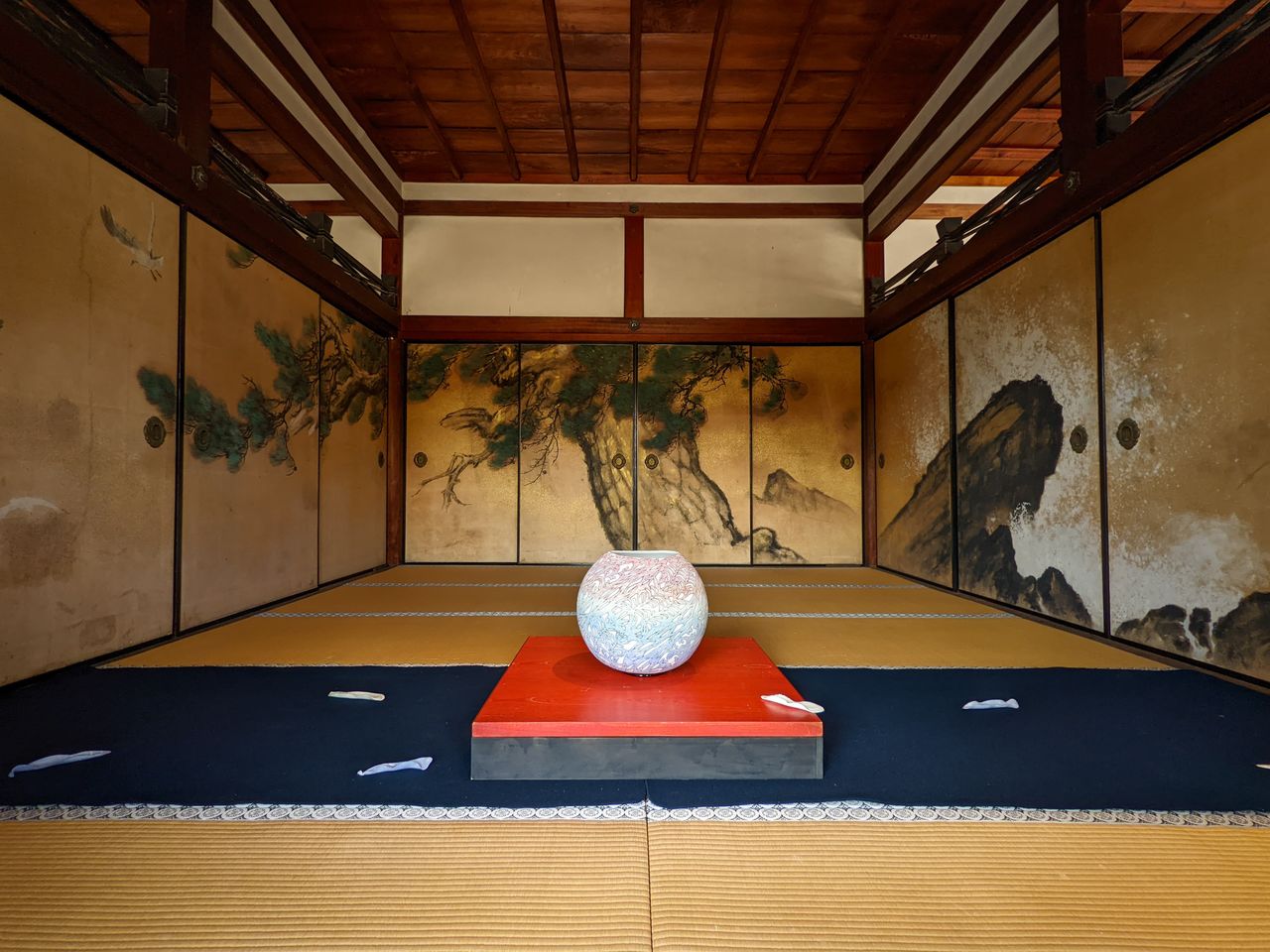
Chung’s rainbow-colored piece on display at Ninnaji.
The showing took place during the cherry blossom season, and in the second room Chung paid homage to the beautiful, short-lived flowers with a work expressing the different stages of blossoming, from peak bloom to petals fluttering away in the wind.
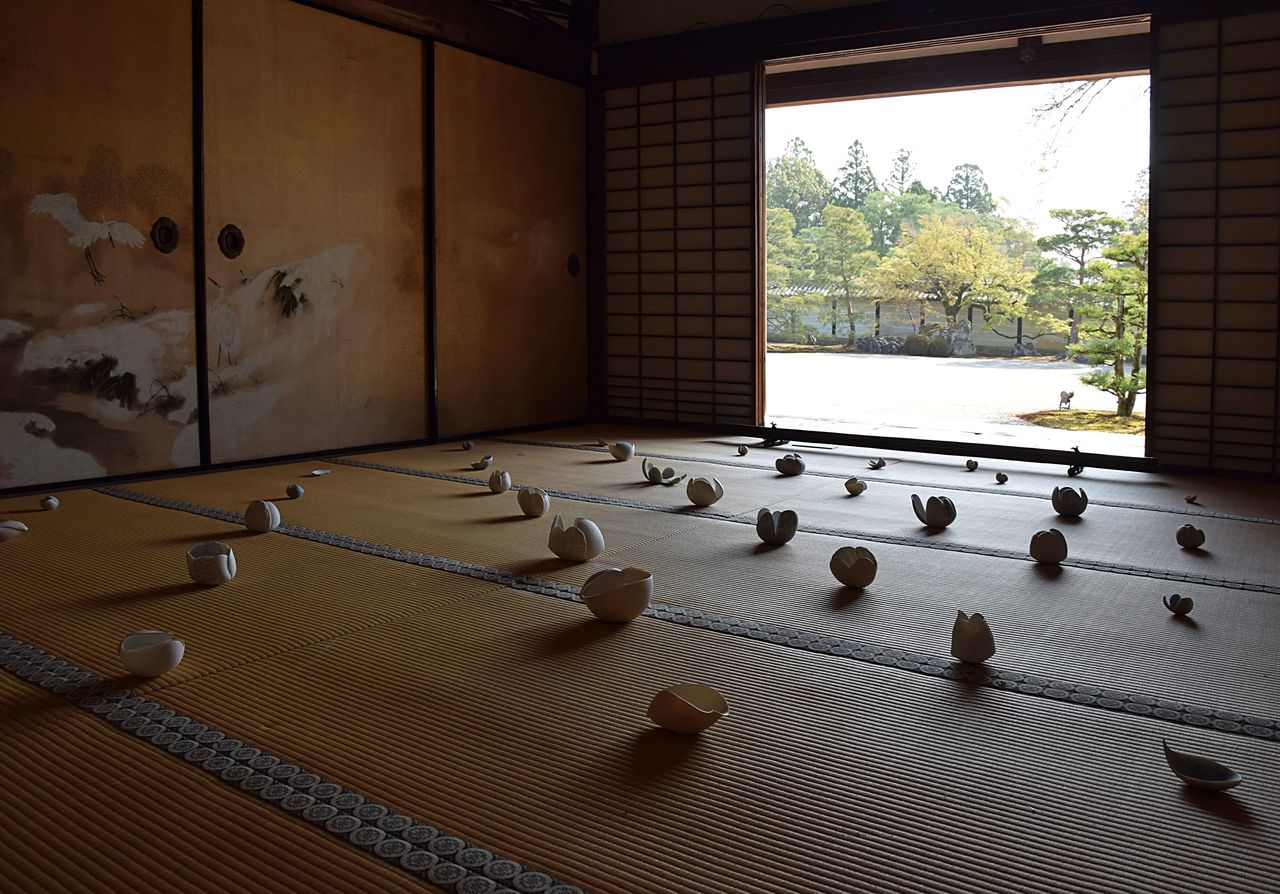
Chung recreates a scene of cherry blossoms falling on a Japanese garden.
In the third room, Chung incorporated elements to show her appreciation of the balance between vessel and space cherished in Japan, and also recognized the relationship among the four seasons. Taking summer as her theme, she incorporated willow motifs, a plant associated with the season in Japan, and chose white and light blue colors to bring a touch of coolness.
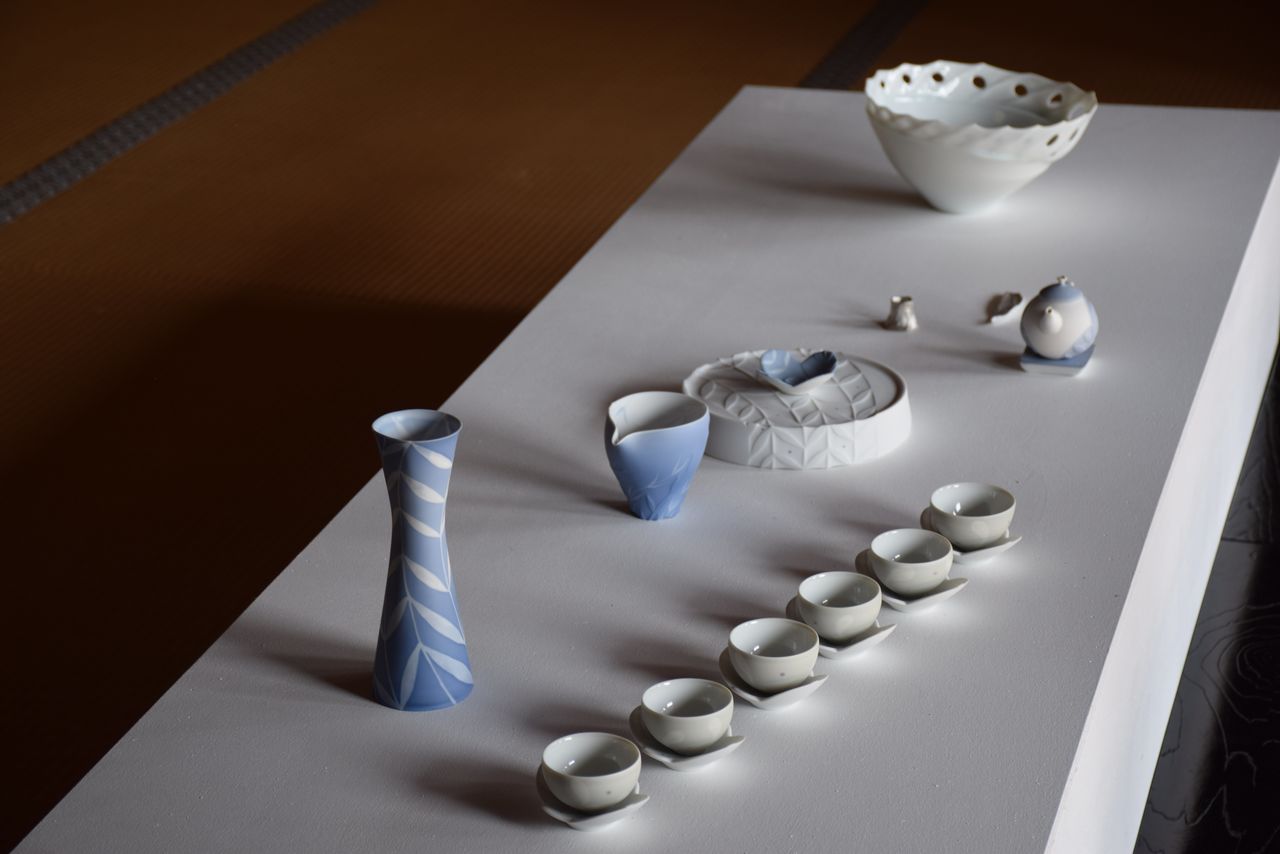
Chung’s summer-themed works on display at Ninnaji.
Rolling with the Punches
When inspiration arises, Chung is known to work through the night chasing her vision. But in 2021, this caught up with her when she became seriously ill. “I had to put everything on hold,” she recounts. “Sitting in the hospital unable to work, I felt empty inside. It reminded me of the need to put things aside from time to time and rest.”
Back on her feet, Chung has realized that she is most content when she is creating and showing her pieces.
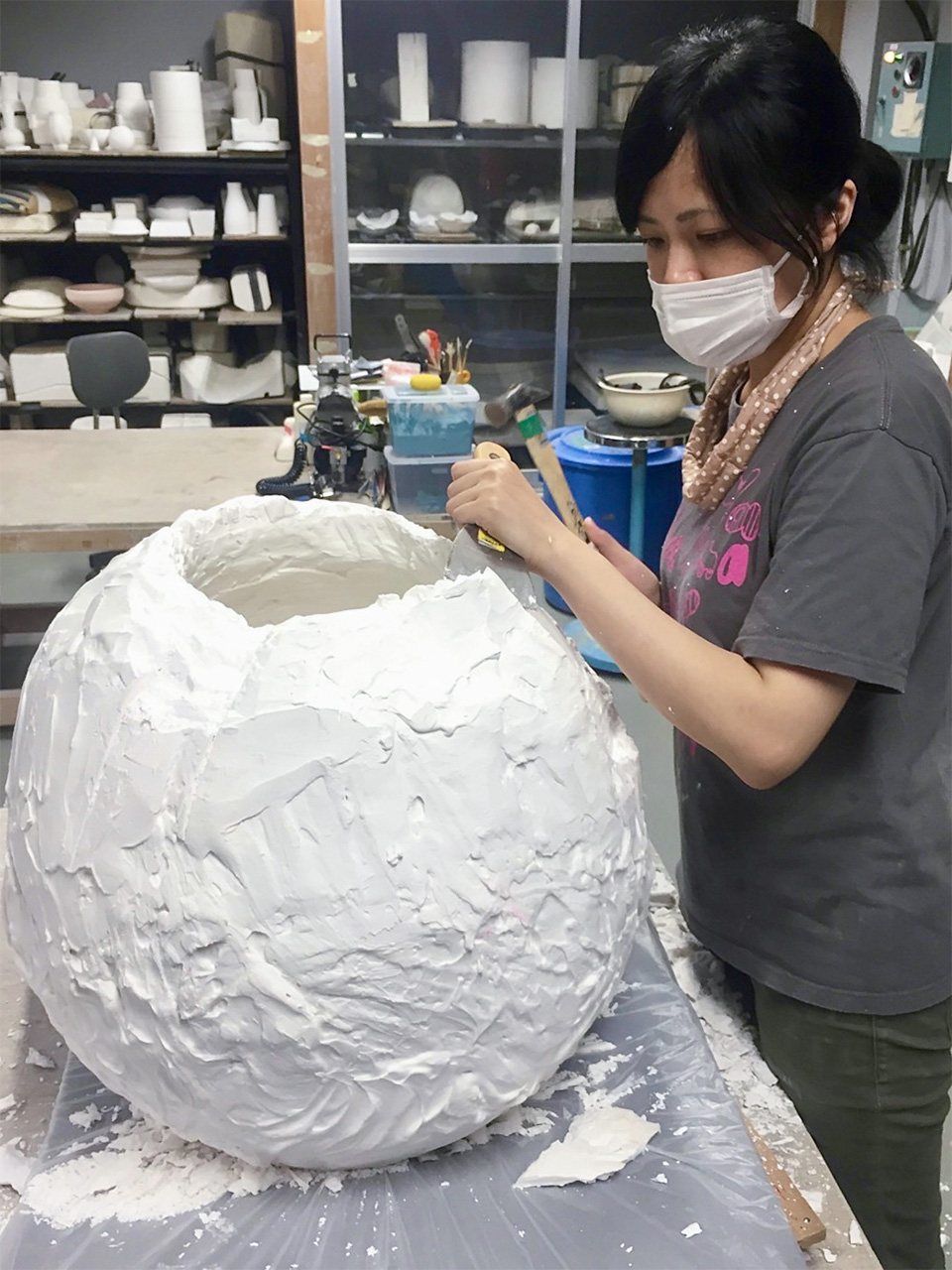
Chung at work in her studio. She sees the process of creating art and the act of sharing it with the public as therapeutic.
Artistic Exchange
Chung continues to take on new challenges, including taking part in international exhibitions, which have brought her in contact with other artists. One such show was at the Fuguei Sanyi art gallery in Taiwan. There she met gallery founder Lin Wen-Hsiang, through whose influence Chung has started curating ceramic exhibitions.
She curated her first show in 2019 in Taiwan. Her second, also in Taiwan, took place in July 2021 and brought together 12 Taiwanese and Japanese potters for an exhibit of wood-fired ceramics, which present distinct features resulting from wood ash settling on the surface of pieces. Chung is hopeful that such meetings of Japanese and Taiwanese art and culture will spark new types of artistic creativity.
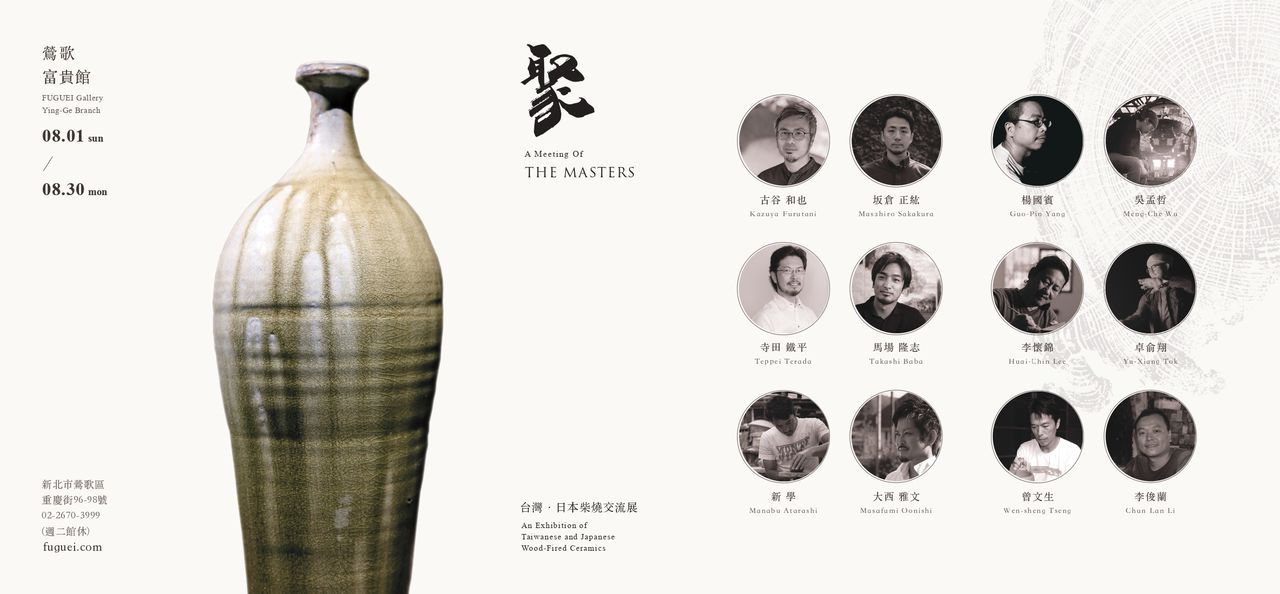
The poster for Chung’s second show as a curator.
Regarding her decision to venture into curating, Chung says that she was drawn by the immense potential of exhibitions. “Along with providing artists chances to share ideas and experiences,” says Chung, “putting together a show also leads to new business opportunities. They provide stable income for galleries, keeping their doors open, and artists, who are able to devote their time to exploring fresh ideas and creating new works.”
Reflecting on her 10 years in Japan, Chung says she is content to stay where she is. “Life has been a string of new challenges and unforeseen events,” she explains. “I considered returning to Taiwan at one point, but I’ve developed attachments here. I figure it’s where I’m meant to be for now.”
(Originally published in Japanese. Banner photo: Japan-based Taiwanese ceramic artist Chung Wen-ting works in her studio. All photos © Chung Wen-ting.)
